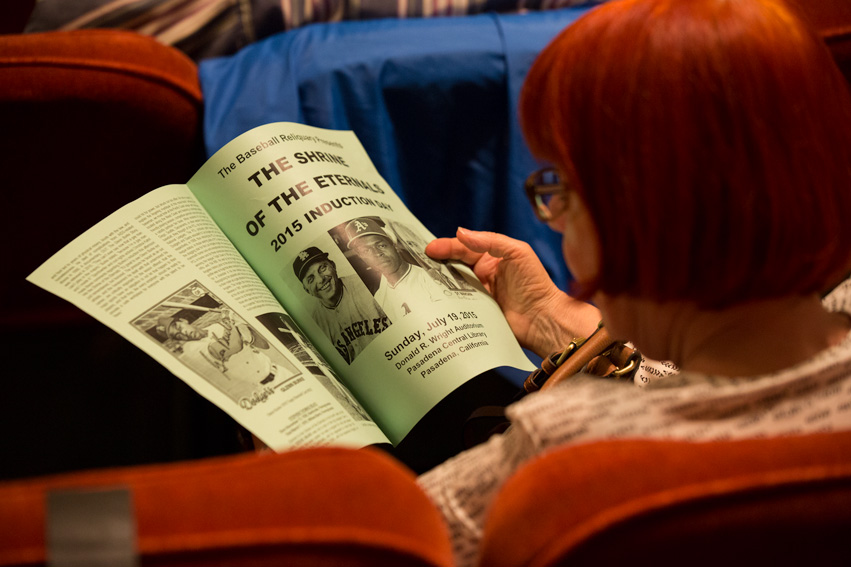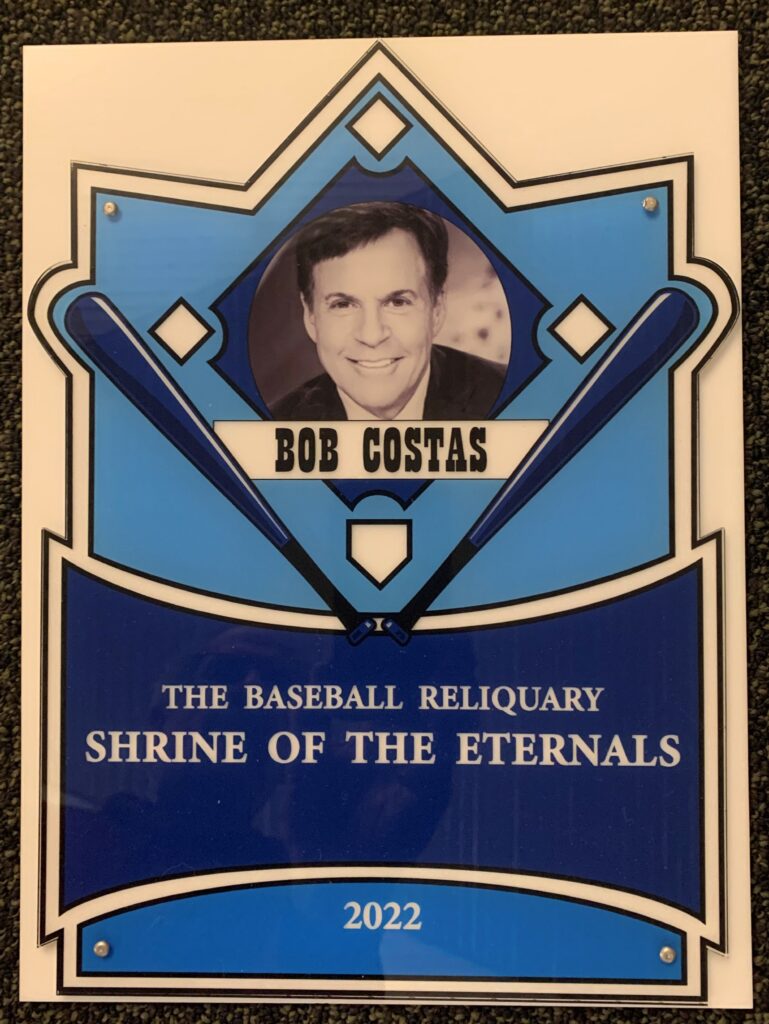The nonpareil of the Baseball Reliquary’s artifacts is a mid-19th century soil sample from the legendary Elysian Fields, which was acquired in July 1997 from Gerald H. Orr of Reading, Pennsylvania. In the coming years, the soil will no doubt be viewed as one of the world’s most sacrosanct baseball relics. Its historic significance will surely rival the National Baseball Hall of Fame’s so-called “Doubleday baseball,” although the soil sample comes with a legitimacy and documentation sadly lacking in the Cooperstown museum’s crude, cloth-stuffed ball.
On June 19, 1846 at Elysian Fields in Hoboken, New Jersey, just a short ferry ride from Manhattan, the first baseball game ever played between two organized teams was held. Alexander Cartwright’s Knickerbocker club took on a team called the New York Nine. The game, which was played under the first written rules of modern baseball, lasted four innings with Cartwright’s team losing by the score of 23 to 1. Although much refinement and evolution would come, this historic outing embodied many of the essential features of the game as we know it today.
Comprising five acres of meadowlands overlooking the Hudson River, Elysian Fields was a baseball mecca in the 1840s, ’50s, and ’60s, and all of the great early teams played there, including the Atlantic, Excelsior, and Eckford clubs of Brooklyn and the Gotham, Eagle, Empire, and Mutual clubs of New York.
The entire text of Gerald H. Orr’s letter to the Baseball Reliquary, dated July 13, 1997, is reproduced below, as the details of the origin of the soil taken from “the birthplace of modern baseball”, and its miraculous preservation for nearly a century and a half, add considerably to the sanctification of this relic.
Dear Terry Cannon,
As we discussed during our telephone conversation of 11 July 1997, I am shipping you, via certified mail, the soil that my great-great-great grandfather, James Orr, Sr., surreptitiously dug up at the Elysian Fields in Hoboken, New Jersey.
According to the family’s oral history, James was invited to New York City by his aunt and uncle, Sara and Robert Orr for his birthday celebration on 4 July 1853. Their son, George, had been an ardent cricket and baseball player, and had developed a friendship with a Mr. Tuche who had organized, I believe, the Gotham baseball club in New York City. As a birthday surprize [sic] for James, George had arranged for he and James to travel by ferry with Mr. Tuche and his team to the Elysian Fields in Hoboken to play the Knickerbockers on 5 July 1853.
During the game James, who had been described as an intuitive type (wrote poetry, unfortunately none has been handed down), was so moved by the game and its manner of being played that, at times, he seemed to be in a trance. After the game, he told George that witnessing the game was one of the most sublime moments in his life, and that he had a vision that baseball was to become a grand and noble sport. He and George talked at great length following the game and a decision was made to return to the Elysian Fields early next morning to dig up a small amount of soil from the area in front of the batters box. This accomplished, he wrapped his booty in cloth and brought it back to Pennsylvania.
James’ family however did not share his enthusiasm which temporarily darkened his spirit and dampened his excitement. He placed the cloth encased soil in a box and stored it in the cold cellar for safekeeping. He attached a note to it describing its importance to him, where and when it was obtained, and instructions to have it passed down to each male child descendant (the note was lost when my father, Robert S. Orr, attended Girard College in Philadelphia from 1913 to 1917). The Elysian Fields “sod” as it was called by the family, was passed to James’ son James Jr., then to his son Roy S., then to his son Robert S., and then to me upon my father’s death in December of 1975. The original cloth container had apparently deteriorated and was unfortunately discarded. When I received it, it was freshly wrapped in newspaper (Reading Eagle, 4 July 1975) which marks the 122nd anniversary of James’ visit to New York for his birthday.
Family tradition would have my son, Mark G. Orr, as the next and rightful heir to the soil. I discussed with him your plans to exhibit it and he agreed that the soil should have a public home and be placed on permanent loan to the Reliquary. If you would need documentation of his agreement, please let me know.
According to my father, the soil was passed through the Orr generations more out of respect for James’ wishes than a belief in its historical importance. Baseball, as I remember, did not occupy a place of significance or prominence in the family. It was only during a visit to Reading by Albert Kilchesty (I had known him when he was a student at Albright College) in April of 1997 that I became aware of the significance of our family heirloom. He suggested that I contact you, and, well, the rest is history.
Sincerely,
Gerald H. Orr








